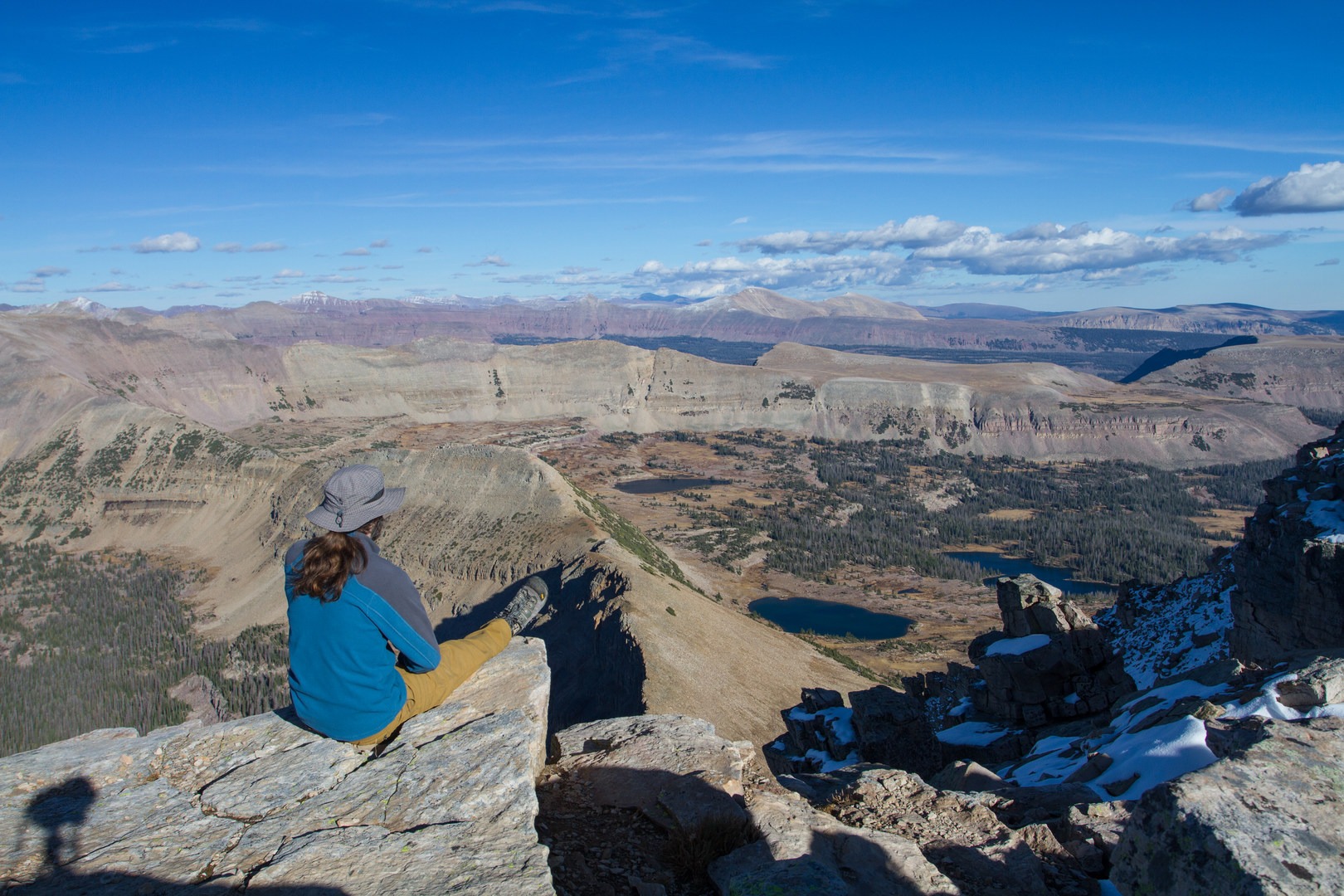You are here
When most people talk about the Uinta Mountains, they are referring to the western region that is accessed by Mirror Lake Highway by way of Kamas. The official High Uintas Wilderness to its east is a vast and desolate region that holds Utah's tallest and some of its most unusual peaks. A slew of wilderness areas were created in Utah in 1984, and this was one of the premiere zones to receive federal protection. The massive area, over 456,000 acres, overlaps both the Ashley and Wasatch-Cache National Forests and has the globally rare distinction of being an east-west facing mountain range. With low elevations above 7,500 feet and topping out with King's Peak at 13,528 feet, naming this area the "High" Uintas was no mistake. Countless lakes, ponds and streams are fed by small glaciers in the highlands with massive meadows peppered with rolling mountain ridges. Tundra plants cling to life above the treeline while spruce, pine and fir trees cover the landscape below and act as the headwaters for several of Utah's major rivers.
There are four beautiful wilderness areas just minutes from Salt Lake City, but they have nothing on the High Uintas Wilderness when it comes to multi-day backpacking trips. The remote location allows for trails to stretch on for days, giving its guests long periods of solitude. Without a doubt, conquering King's Peak is a "bucket-list" hike thanks to it being the tallest peak in the state, and people don't stop heading up there in the winter either. Nearby Gunsight Peak is also a formidable and fun challenge. What they both do lack, however, is the sheer beauty and unusual charm of the Red Castle, a strange formation that bucks the trend of the rounded yet flattened ridgelines that are so common here. Naturalist Basin is one of the prettiest places in the High Uintas and can be accessed from the Mirror Lake Highway, along with its nearby peak, Mount Agassiz. The most in-depth look at this wilderness area in one continuous multi-day backpack is without a doubt the Highline Trail. The bucket-list trip stretches from the far western to the far eastern edges of the park for a daunting 104 miles. It is the quintessential way to see the majority of the wilderness in one trail.
With a mind-boggling 545 miles of trails to explore, the area offers a lifetime of adventure far from civilization. In regards to wildlife, the region hosts a very wide variety of animals such as black bear, mountain goat, coyotes, cougars, and even river otter, not to mention three-fourths of Utah's bird species. The plentiful fields of wildflowers in summer help put some color into what can be a drab landscape during the fall or spring, but the area really is a year round recreation paradise. Backcountry camping is incredibly common here because of the long approaches and lack of development, but please review the regulations before you head out there for a multi-day adventure. To access the High Uintas Wilderness from Utah, you will be heading north from the towns of Tabiona, Duchesne, Roosevelt or Vernal, or you can get there by heading south from Evanston, Mountain View, or Lonetree, Wyoming.
Logistics + Planning
Current Weather: Powered by Dark Sky






























Comments
Sign In and share them.